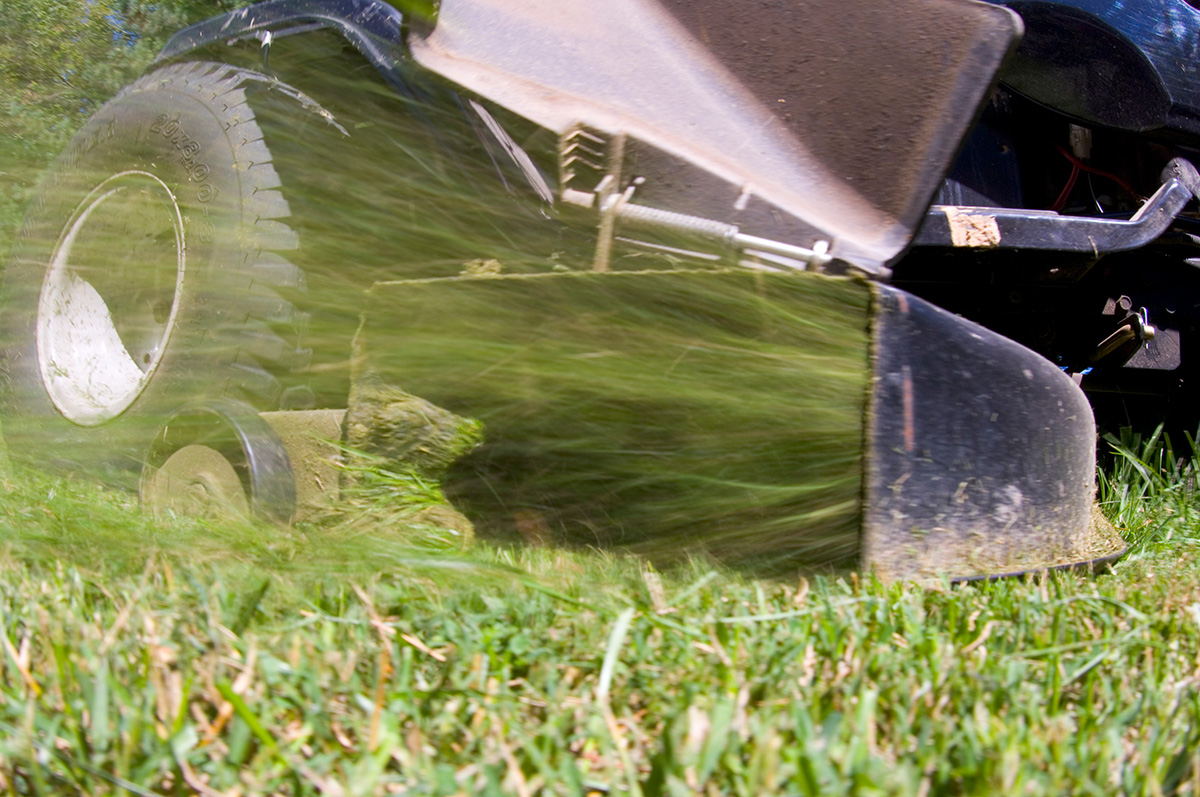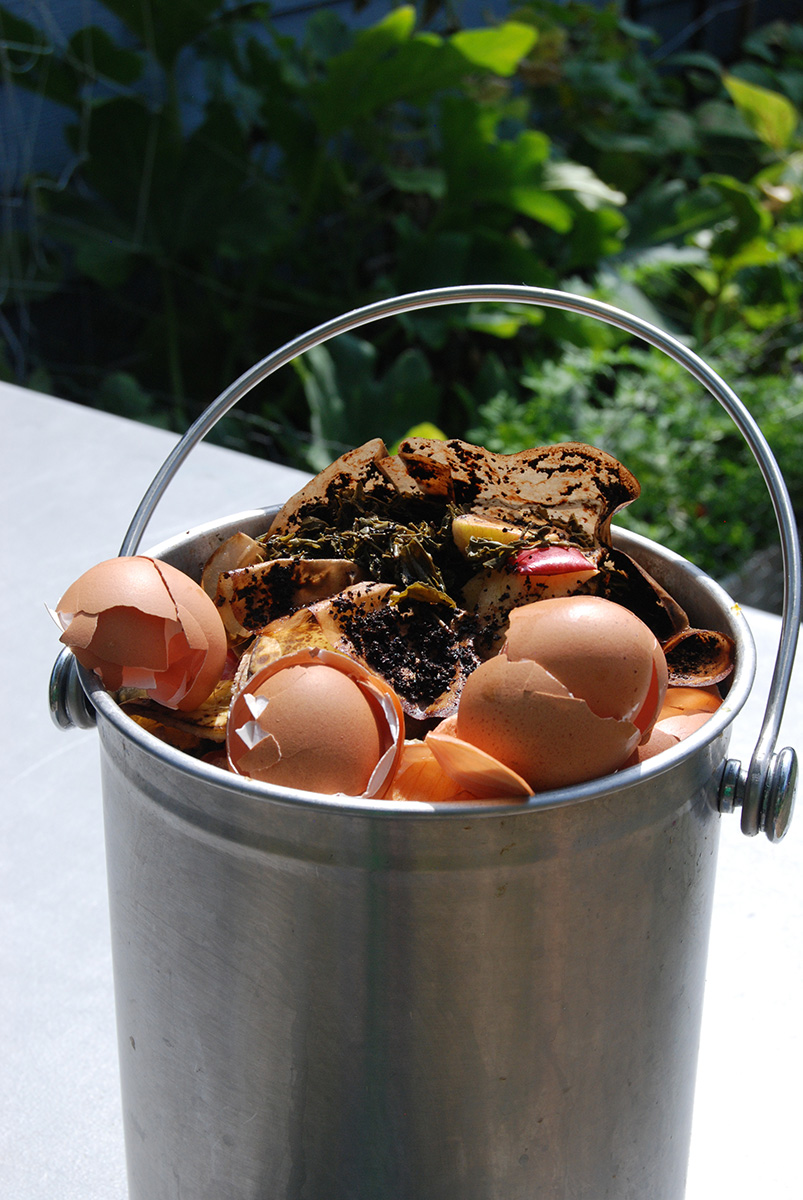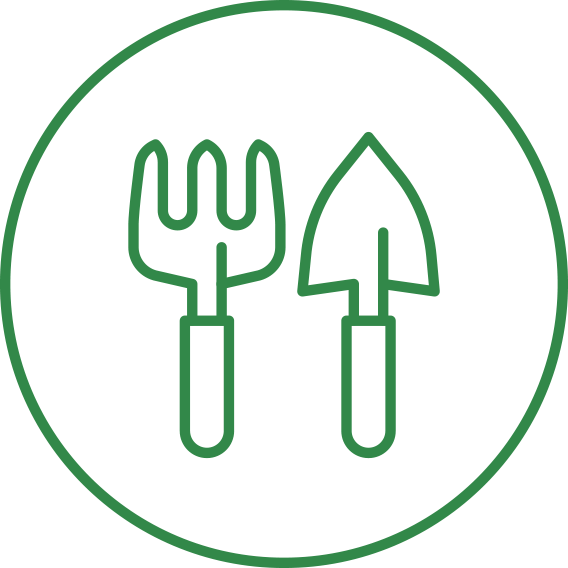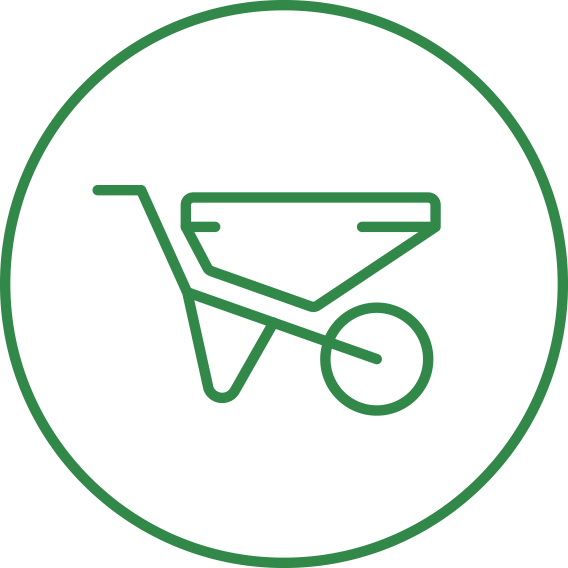Add Nutrients and Organic Matter
Leaving your grass clippings and composting are some great methods to increase the health of your lawn and garden and reduce your dependence on chemical fertilizers, as well as decrease your lawn care costs.
Taking a “greener” approach can start with small, simple steps.

Mulching instead of bagging your clippings saves time and adds nutrients back to the lawn. | Photo credit: Shutterstock
Leave Clippings & Mulch Leaves
Rather than bagging your leaves and lawn clippings, just leave them there! Not only will you save mowing and bagging time and disposal costs, you will also save on fertilizer costs. Decomposing leaves and grass clippings release nitrogen, phosphorus, and potassium as well as other nutrients that will help feed your lawn. The clippings will also lead to an increase in earthworm activity, which helps improve soil aeration.
To learn more about the best way to save on fertilizer costs using grass clippings, visit the Mow Smart page.

Composted food scraps can be a great source of nutrients for your plants. | Photo Credit: Janice Milanovich, Illinois-Indiana Sea Grant
Compost
Another great source of natural nutrients and organic matter is compost. In the most basic of terms, compost is a mixture of decayed plants and other organic matter used to enrich soil. Compost, unlike other soil amendments, can be worked into the soil anytime of the year without risk of burning the plants, and can be used with indoor plants as well.
If you’re interested in making compost at home, you should first think about the types of organic wastes you generate, how much time you want to spend composting, how big your property is, and how much of it you are willing to give up to your composting operation.
Composting can be as simple as tossing kitchen scraps (no meat or dairy) and yard waste into a pile or as complex as carefully managing your compost pile with hydrometers, thermometers, and various other meters. Be realistic in your expectations of time, energy, and effort. The University of Illinois Extension’s Composting Resources have more information about how to get started with composting.
For those with little to no yard space, or who only want to produce a small amount of compost, worm composting (or vermicomposting) is an easy way to turn food wastes into a nutrient-rich soil amendment. Worms like to feed on slowly decomposing organic materials like fruit and vegetable scraps, and will then produce nutrient-rich waste, called castings, which make a great plant fertilizer. The equipment needed to vermicompost is minimal, and it’s a great project for kids. You can purchase a premade vermicomposter, or you can make one at home using a plastic tote storage box. University of Illinois Extension provides an informative Beginners Guide to Worm Composting.
What about Fertilizer?
If you need to apply fertilizer based on soil testing results, September and November are the two best times to fertilize your lawn. An application of nitrogen in the fall promotes good root development, enhances your lawn’s energy reserves, and extends color retention. The benefits will be seen in the spring with earlier green-up, better turf density, and improved tolerance of turf diseases.
See Fertilize Appropriately for more information.








